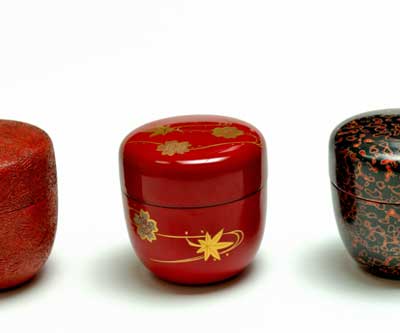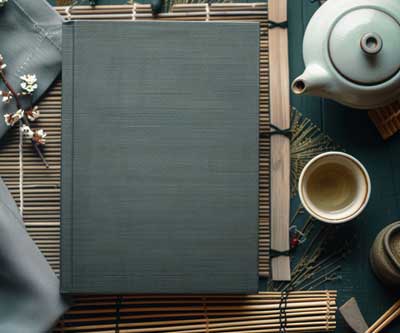A natsume tea caddy, especially a valuable collector's item, deserves special care. Properly cleaned and cared for, it not only remains functional but also preserves its aesthetic and historical value. Here are detailed instructions and tips on how to best care for your natsume.
1. Regular cleaning after use
After each use, it's important to clean your Natsume to remove any tea residue and any remaining residue. Follow these steps:
Dry cleaning:
Use a soft, dry cloth to wipe the inside and outside of the Natsume. This will remove any dust, tea powder, or other particles without damaging the surface.
Slightly damp cleaning:
If necessary—for example, if fine matcha residue or other impurities have accumulated—you can use a slightly damp cloth. Make sure the cloth is only slightly damp, as too much water can damage the ceramic and the lacquer.
Thorough drying:
After cleaning with a damp cloth, be sure to thoroughly wipe the Natsume with a dry, lint-free cloth. This prevents moisture from accumulating in the pores of the ceramic and causing potential damage.
2. Dealing with moisture
Moisture is one of your Natsume's biggest enemies. Although the ceramic is durable, persistent moisture and poor ventilation can lead to mold growth or damage to the paint.
Avoid the dishwasher:
Natsume containers are delicate and not dishwasher-safe. Intensive cleaning cycles and prolonged exposure to water can cause lasting damage to the material and surface finish.
No prolonged soaking:
Even if you want to remove stubborn dirt, never soak the Natsume in water. Instead, gently wiping is the best method.
3. Storing your Natsume
Proper storage contributes significantly to the longevity of your matcha tin. Keep the following points in mind:
Regular use:
A Natsume lives through its use. Opening it regularly keeps it well ventilated and prevents harmful moisture from accumulating. At the same time, any patina—if present—is preserved naturally.
Storage away from direct sunlight:
Direct sunlight can damage the material and paint finish of your Natsume. The colors could fade, the paint could crack, or the finish could lose its original smoothness. Therefore, store your Natsume in a cool, shady place.
Dry environment:
Store the Natsume in a location with stable, not too high humidity. A well-ventilated room or display case with little moisture accumulation is ideal.
4. Tips for long-term care
No chemical cleaning agents:
Never use harsh cleaning agents or scouring pads. These could irreparably damage the surface and diminish the beauty of the Natsume.
Careful handling:
Avoid exposing the Natsume to shocks or extreme temperature fluctuations. Sudden temperature changes can cause hairline cracks in the ceramic.
Regular inspection:
Check your Natsume occasionally for cracks, stains, or signs of mold. The sooner you detect minor damage, the easier it is to repair it or seek professional help.
Why care is so important
Your natsume is not only a functional tea container, but also a work of art that reflects Japanese craftsmanship and aesthetics. Proper care protects its structure and preserves its beauty, ensuring it will be preserved for generations to come. By handling it with care, you respect not only the object itself, but also the tradition and culture that gave rise to it.
A well-kept Natsume is not only a symbol of enjoyment, but also of appreciation of the moment – in the spirit of the Japanese tea ceremony.




Leave a comment
This site is protected by hCaptcha and the hCaptcha Privacy Policy and Terms of Service apply.